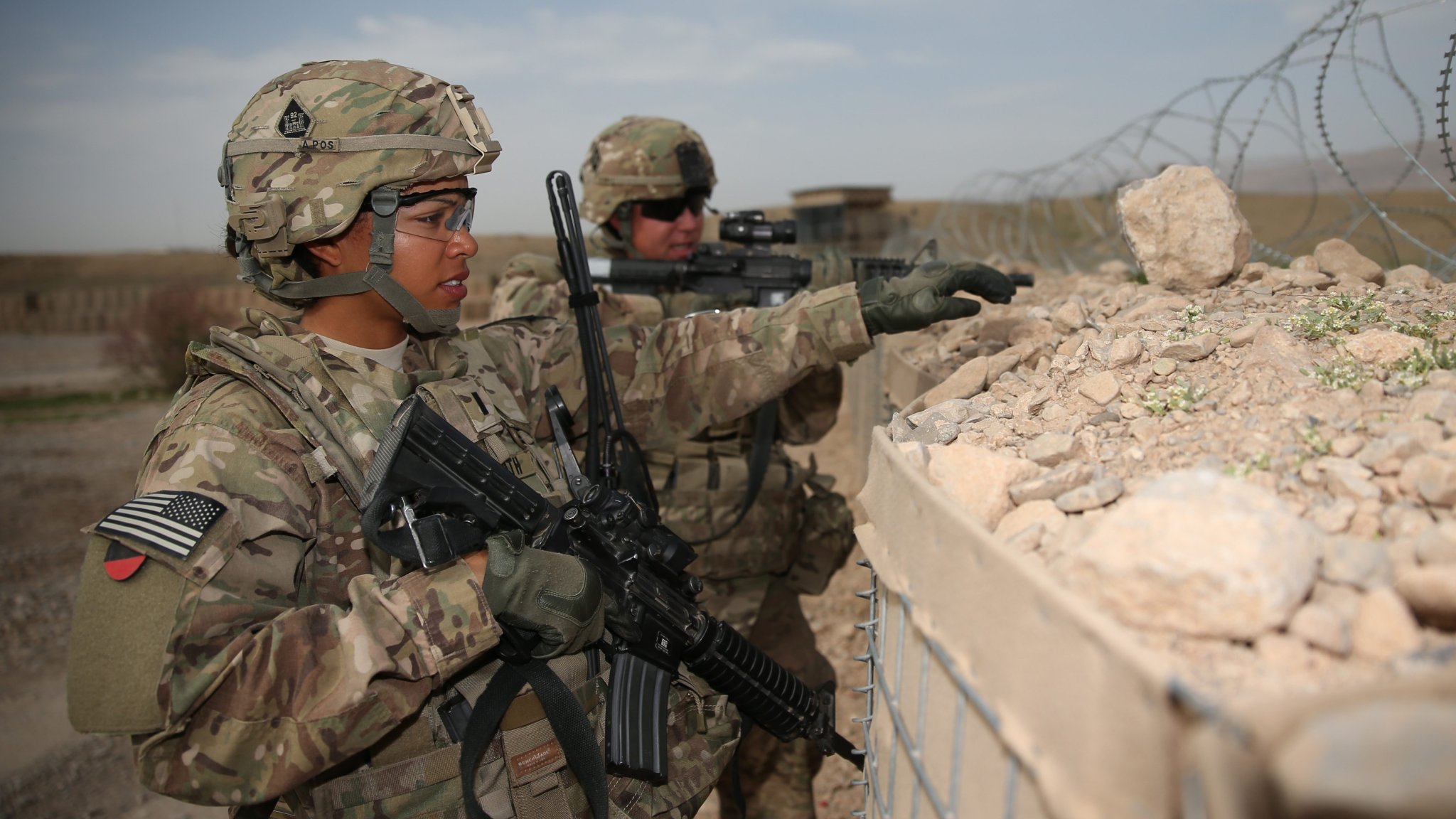

A medical study of long-term chronic pain in combat veterans found troubling results for two groups of women: not only were women who faced heavy combat overseas more likely to develop chronic pain later in life, but so were female spouses back home whose husbands faced higher levels of violence.
The new study, published in the Journal of the American Medical Association or JAMA, analyzed chronic pain diagnoses for women who deployed into combat zones and female dependents of U.S. troops who deployed to Iraq and Afghanistan from 2006 to 2013, the height of combat rotations for both wars. Researchers then compared incidents of chronic pain to similar groups whose deployments or spouse’s deployments were between 2014 to 2020, when troops saw less combat frequency.
“The main takeaway from the study is that heightened rigors of deployment, as we saw during the combination of the Iraq war troop surge and the troop surge that followed in Afghanistan, has an outsized effect on the development of chronic pain conditions down the road in active duty service women,” said Andrew Schoenfeld, the lead researcher. “But then also, this was the surprising part, an even higher magnitude when looking at the women who are civilian dependents of active duty service members.”
The findings suggest a stronger link between the mental health tolls of combat and chronic pain, even for those not directly exposed to combat, like military spouses. Researchers also found that chronic pain was more likely for those with previous behavioral health issues.
According to John Hopkins Medicine, chronic pain is defined as “long standing pain that persists beyond the usual recovery period or occurs along with a chronic health condition, such as arthritis.” Chronic pain can come in waves or be continuous and “may affect people to the point that they can’t work, eat properly, take part in physical activity, or enjoy life.”
According to the study, active duty women in combat between 2006 and 2013 were 53% more likely to develop chronic pain. The risk for junior enlisted women was even higher with researchers finding they were 95% more likely to develop chronic pain symptoms.
While women in combat are “exposed to stresses of war” which includes risk of injury or death, Schoenfeld said it’s “understandable how there may be a higher risk associated with all those factors for the development of chronic pain.” But with dependents, researchers “were not expecting to see comparable or even the same signals,” he said.
The reason that female dependents suffer could be that “many of those stresses that are borne by the service members when they’re down range are brought back to the home,” Schoenfeld said. The “fear and worry for the safety” of their deployed partner, assuming duties of a single parent, income alterations, and social support disruptions could also be factors, according to researchers.
Researchers didn’t look at chronic pain rates for specific jobs but Schoenfeld said the nature of combat in Iraq and Afghanistan with troops fighting an insurgency was anxiety inducing across the board.
“The nature of that kind of conflict where there’s no well defined battle line, who is an adversary and who is not is very difficult to determine,” Schoenfeld said, “you basically feel like you’re surrounded all the time.”
“It doesn’t matter what MOS you’re in or what your particular mission is,” he said. “I think all these constant stressors have equally high proclivity to result in these conditions developing down the road.”
Subscribe to Task & Purpose today. Get the latest military news and culture in your inbox daily.
Why study chronic pain?
Chronic pain is one of the leading causes of disability in the working-age population and affects as many as 100 million Americans. In the U.S., typical treatment for chronic pain involves opioids which can lead to substance abuse, dependence and addiction, resulting in annual costs as high as $635 billion, according to the study.
The prevalence of chronic pain is higher among U.S. veterans and those exposed to combat compared to their civilian peers.
Injured service members returning from combat deployments in the Middle East coincided with the rise of pain medication prescriptions across the U.S. In 2009, military physicians wrote nearly 3.8 million prescriptions for pain medication which was more than four times more than 2001. In 2007, chronic opioid use peaked In the Army.
However, more recently, studies have shown that prescribed opioid use is going down. A 2021 study that analyzed Military Health System data found “a significant decline” in opioid prescriptions for pain management.
Researchers recommended that officials target support services to service members and dependents with the greatest risk of developing chronic pain “including those from lower socioeconomic strata or individuals with behavioral health conditions.” They also said their recommendations could apply to civilian women exposed to firearm injuries or mass casualty events and spouses or partners of individuals who experience similar traumas.
Schoenfeld said the study should prompt a bigger discussion in the military on chronic pain and believing service member symptoms as a legitimate medical issue.
“I think we need to retrain ourselves in terms of how we view these people who have chronic pain because clearly as it’s shown in this paper and this research that we’ve done, this is a downstream effect,” he said. “They didn’t have chronic pain at the time that they were deployed. This is something that developed subsequently and is tied intimately to the repeated exposures to that environment.”
The study was funded by the DOD and Defense Health Agency.
The latest on Task & Purpose
- This 41-year-old soldier graduated Army basic training after a 20 year break
- The woman who predicted the Tết Offensive, but was ignored, passes away at 97
- National Guard soldiers training with ‘pocket-sized’ drones
- Army vet receives Bronze Star with valor 20 years later for bravery in Iraq ambush
2 Civil War soldiers receive Medal of Honor for ‘Great Locomotive Chase’
